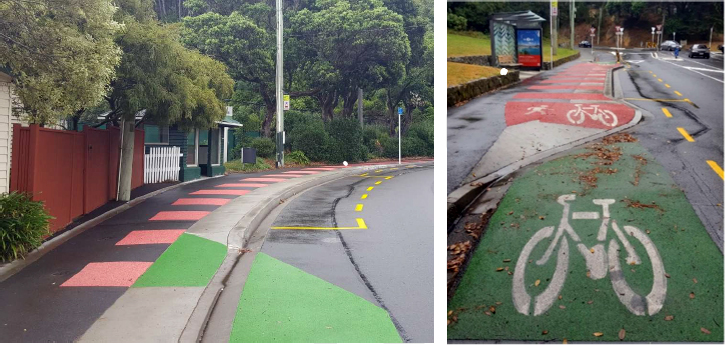In constrained corridors, one option is for a shared space to be provided at the bus stop rather than having a segregated cycleway and footpath (see the figure below). This design may be acceptable in locations where cyclist speeds are naturally slow due to topography or other factors and where boarding/alighting passengers and cyclist volumes are relatively low.
Research in 2021 using intercept surveys of pedestrians and cyclists found relatively positive safety perceptions when these types of designs were implemented in an uphill environment with relatively low numbers of users, but not when implemented on flat topography with higher user numbers.[1]
If this design is used, consider using texturised surfacing in the boarding/alighting zone of the bus stop to dissuade people on bikes or scooters from going through the alighting area. Take care to ensure that adequate width and path markings are provided.
In the figures below, the walk and cycle marking in the image on the right could be removed, swapped around, or aligned vertically to avoid leading cyclists into the boarding/alighting area.

Shared space designs on Crawford Road, Wellington. Note: In the image on the left, cycle markings would indicate where people should bike. The pedestrian and cycling markings in the image on the right should be aligned vertically show it is a shared space and not ‘lead’ riders into the alighting zone. (Source: Keren Love)
Reference
[1] K Love. y2021. User Perceptions of Bus Stop Bypasses: Intercept surveys of pedestrians and cyclists (unpublished research for Victoria University of Wellington Summer Research programme)